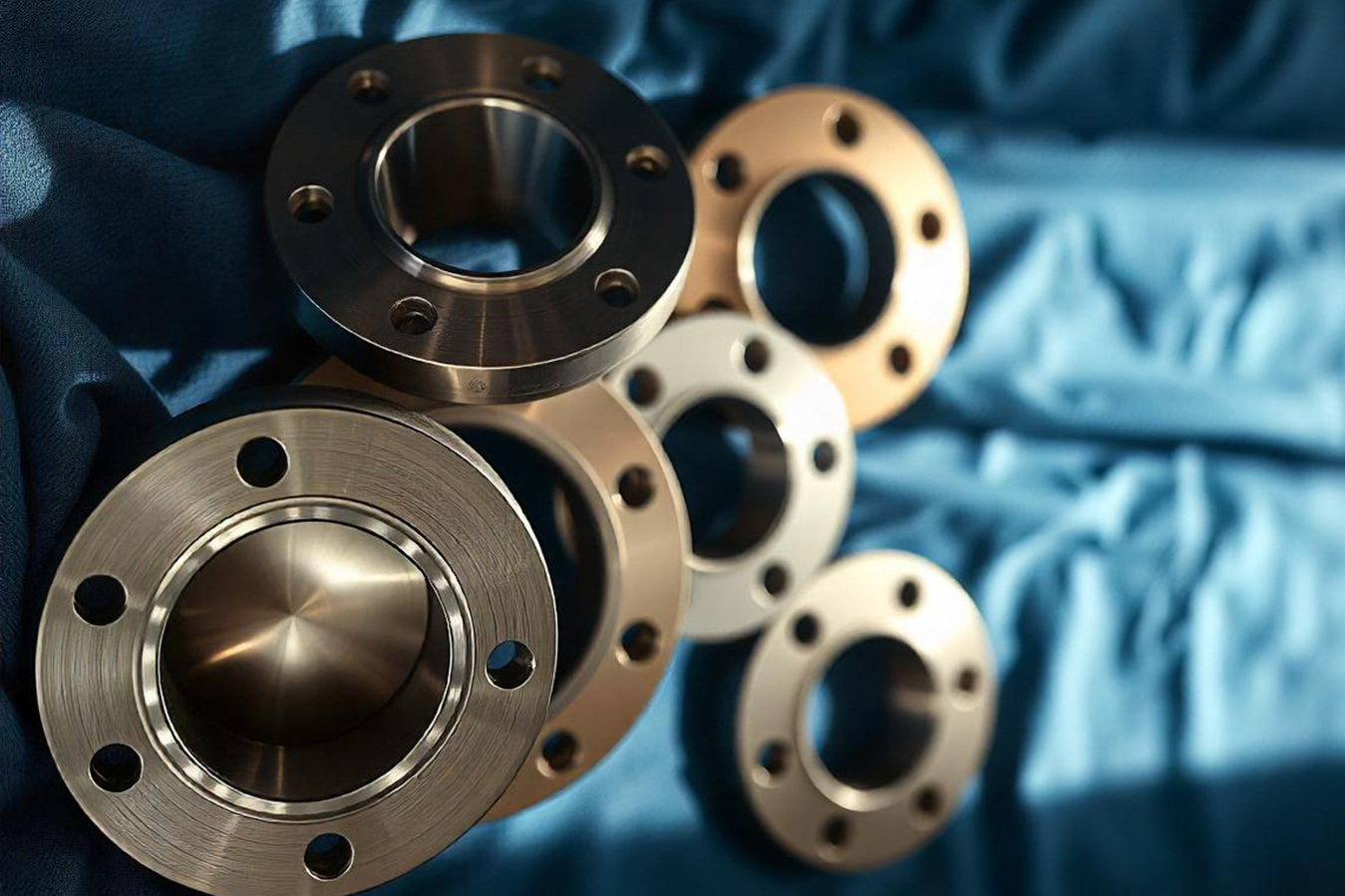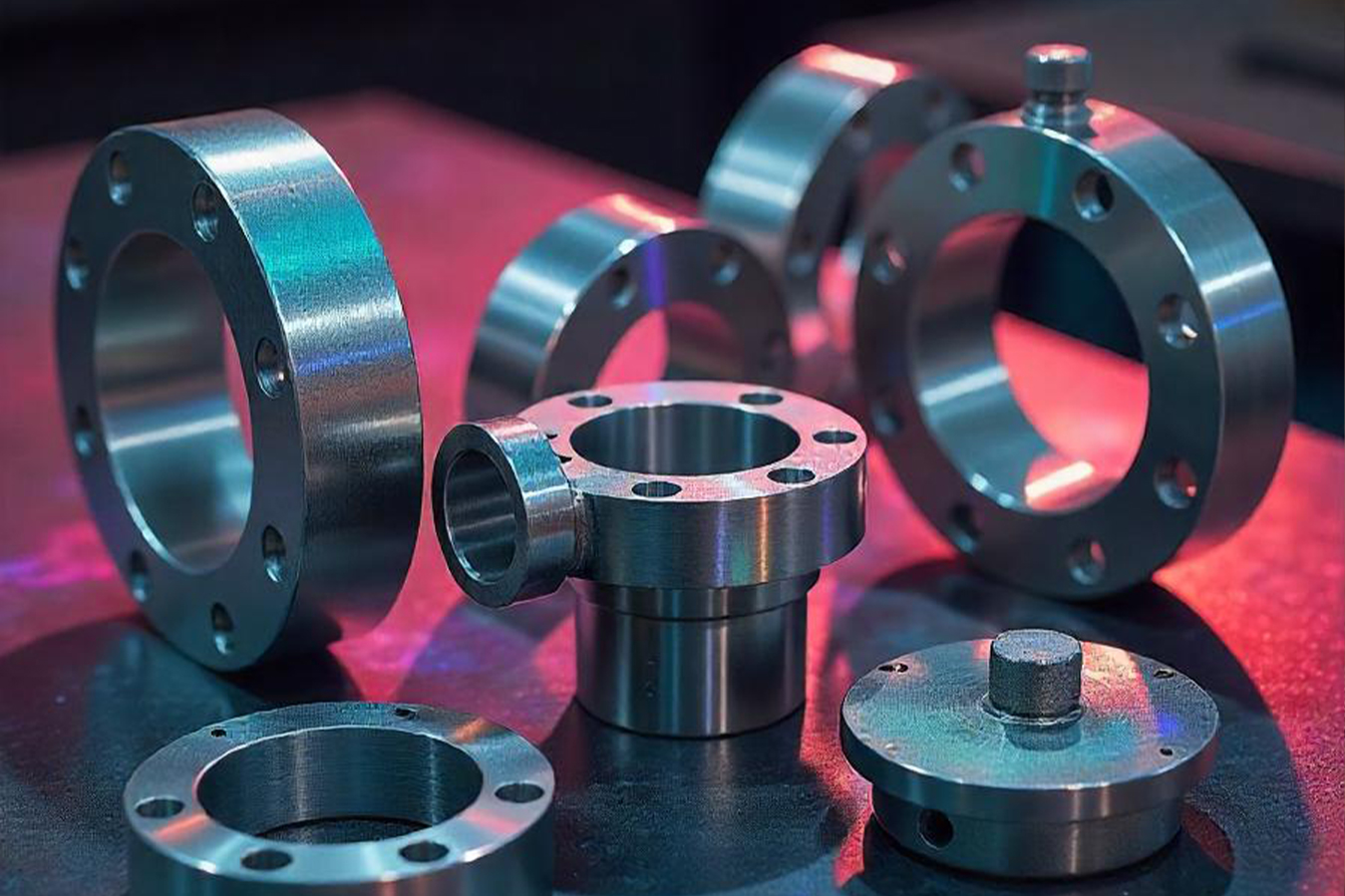Flanges
Flanges
Order On
Order Now
Product Details
1. Definition and Purpose
A flange is a projecting rim, collar, or ring on a pipe, fitting, or valve designed to provide a means of connection or attachment.
Primary Functions:
- Connect pipes and equipment.
- Allow for easy inspection, cleaning, or modification.
- Provide a secure seal for pressure containment.
2. Types of Flanges
Based on Design
1. Weld Neck Flange:
- Features a long tapered hub.
- Suitable for high-pressure and high-temperature applications.
- Provides strong and leak-proof connections.
2. Slip-On Flange:
- Slides over the pipe and is welded both inside and outside.
- Economical and easy to install.
- Used for low-pressure applications.
3. Socket Weld Flange:
- Pipe is inserted into the flange and fillet-welded.
- Ideal for small-diameter, high-pressure systems.
4. Threaded Flange:
- Screwed onto pipes with matching threads.
- Suitable for low-pressure, non-critical applications.
- Used when welding is not possible.
5. Blind Flange:
- Closes the end of a piping system or vessel.
- Does not have a bore.
- Withstands high-pressure applications.
6. Lap Joint Flange:
- Used with a stub end fitting.
- Allows easy alignment and rotation.
- Suitable for systems requiring frequent dismantling.
7. Orifice Flange:
- Used for measuring flow rate in piping systems.
- Comes with pressure taps.
8. Reducing Flange:
- Used to connect pipes of different sizes.
- Eliminates the need for a separate reducer fitting.
3. Material Options
Mild Steel (MS): Cost-effective, suitable for low to medium-pressure applications.
Carbon Steel: Withstands higher pressures and temperatures.
Stainless Steel: Provides corrosion resistance.
Alloy Steel: Suitable for extreme conditions, such as high temperatures and pressures.
Non-Metallic Materials: PVC, CPVC, etc., for low-pressure, corrosive environments.
4. Flange Dimensions and Standards
Key Dimensions
- Outer Diameter (OD)
- Inner Diameter (ID)
- Bolt Circle Diameter (BCD)
- Number and Size of Bolt Holes
- Flange Thickness
Standards
ASME/ANSI B16.5: Pipe flanges and flanged fittings (1/2″ to 24″).
ASME B16.47: Large diameter steel flanges (26″ to 60″).
BS 4504, DIN, EN, JIS, etc.: Regional standards for flanges.
5. Applications
Industrial
- Oil and gas pipelines.
- Chemical and petrochemical plants.
- Power plants.
- Water treatment plants.
Construction
- HVAC systems.
- Plumbing and drainage systems.
Specialized
- Shipbuilding.
- Food and beverage industry (sanitary flanges).
6. Maintenance and Care
Inspection: Check for corrosion, deformation, or wear regularly.
Gaskets: Replace worn-out gaskets to maintain a proper seal.
Bolts and Fasteners: Ensure they are adequately tightened and corrosion-free.
Surface Treatment: Use galvanization, painting, or coating to prevent rust.
7. Advantages of Flanges
Ease of Maintenance: Simplifies assembly and disassembly.
Flexibility: Allows modifications and extensions to existing piping systems.
Strength: Capable of handling high pressures and temperatures.
Variety: Available in various materials, sizes, and designs for specific needs.
8. Selection Criteria
Material Compatibility: Choose materials suitable for the fluid, pressure, and temperature.
Connection Type: Match with the pipe or equipment type.
Pressure Rating: Ensure compatibility with the operating pressure.
Standard Compliance: Verify adherence to relevant industry standards.




